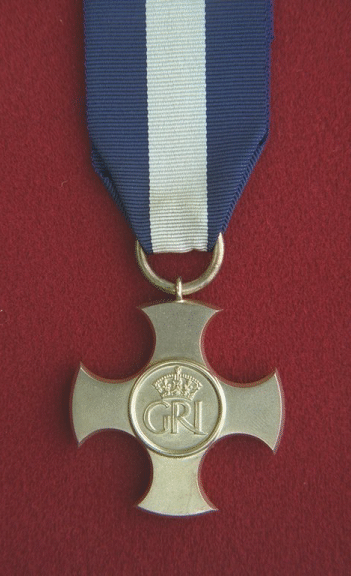Distinguished Service Cross (DSC)
Description
Context
This award was originally established in June 1901 as the Conspicuous Service Cross and changed to the Distinguished Service Cross (DSC) in October 1914.
Eligibility and Criteria
This was awarded to Naval personnel, from Warrant Officer to Lieutenant, for the performance of commendable or distinguished services before the enemy. In 1939, Commanders and Lieutenant-Commanders were also made eligible for the DSC. Members of the Air Force or Army serving with the fleet were also eligible.
Description
A plain silver cross pattee, convex and 1.56 inches across. For mounting, a large ring is linked to a small ring welded to the top arm.
The obverse shows the Royal Cypher on the circular central medallion surmounted by a crown. The cyphers GV, GVI and EIIR have been used for Canadian awards.
The reverse is plain, with the year of the award engraved on the lower arm.
The ribbon is 1.375 inches wide and consists of 3 equal stripes: navy blue, white, and navy blue. A rosette is worn in undress to signify a bar.
Bars
Bars were awarded for the performance of subsequent acts of service before the enemy. The slip-on bar is silver, with a crown in the centre, and is convex at the ends of the arms. Beginning during Second World War the year of the award of the bar has been engraved on the back.
Historical Notes
- A total of 199 DSCs have gone to Canadians, with 34 first and five second bars.
